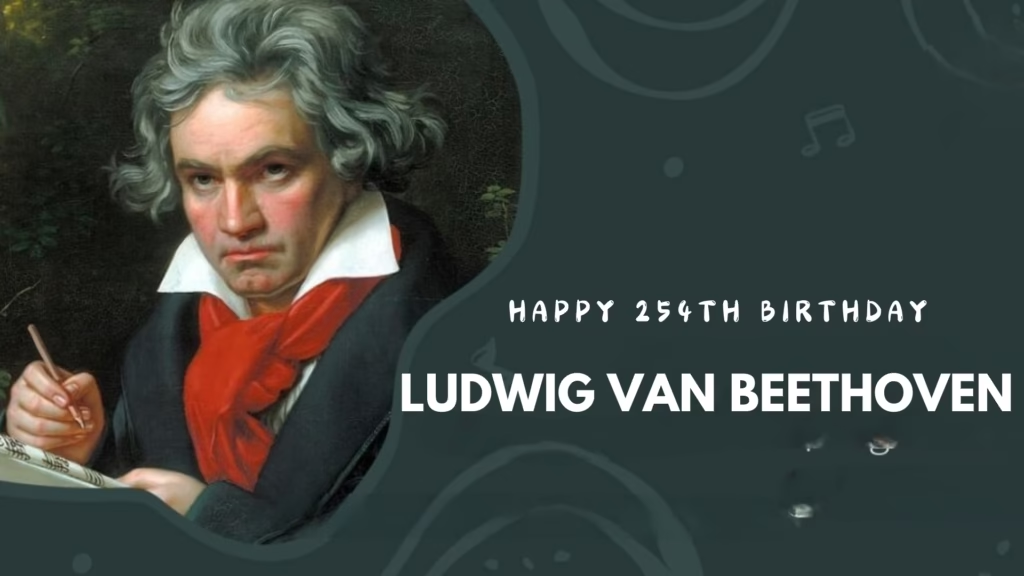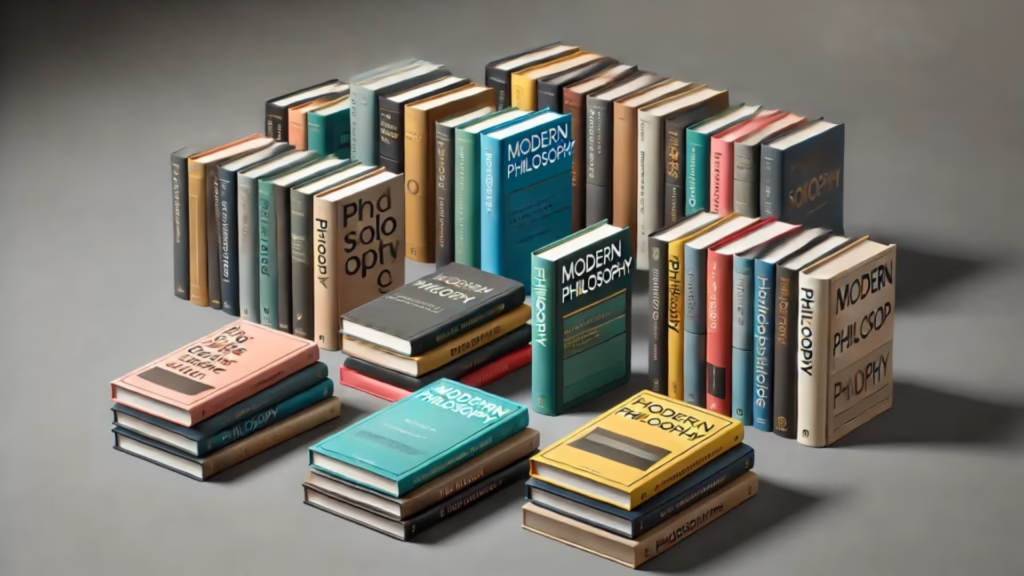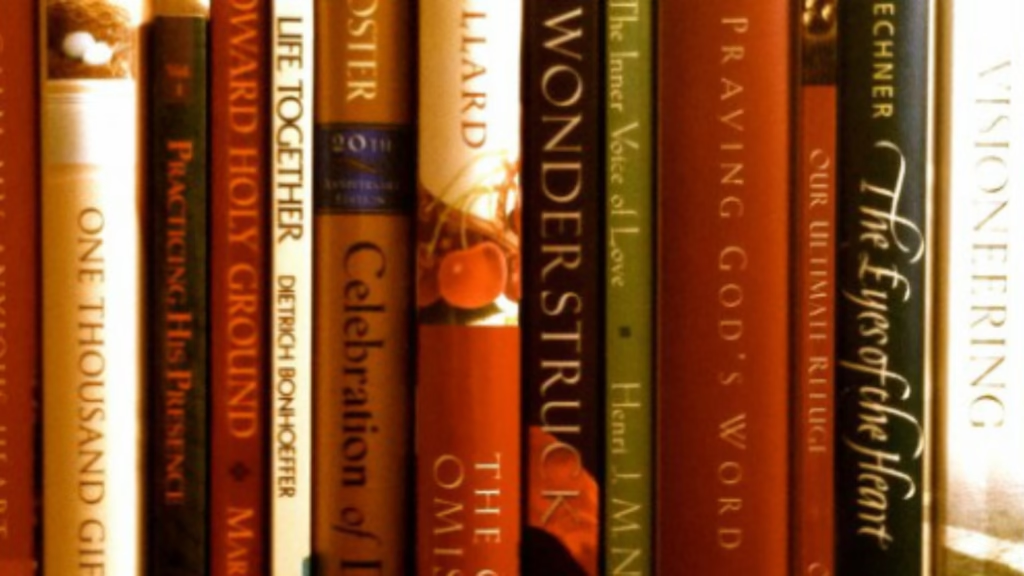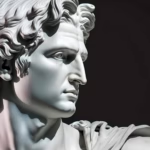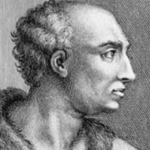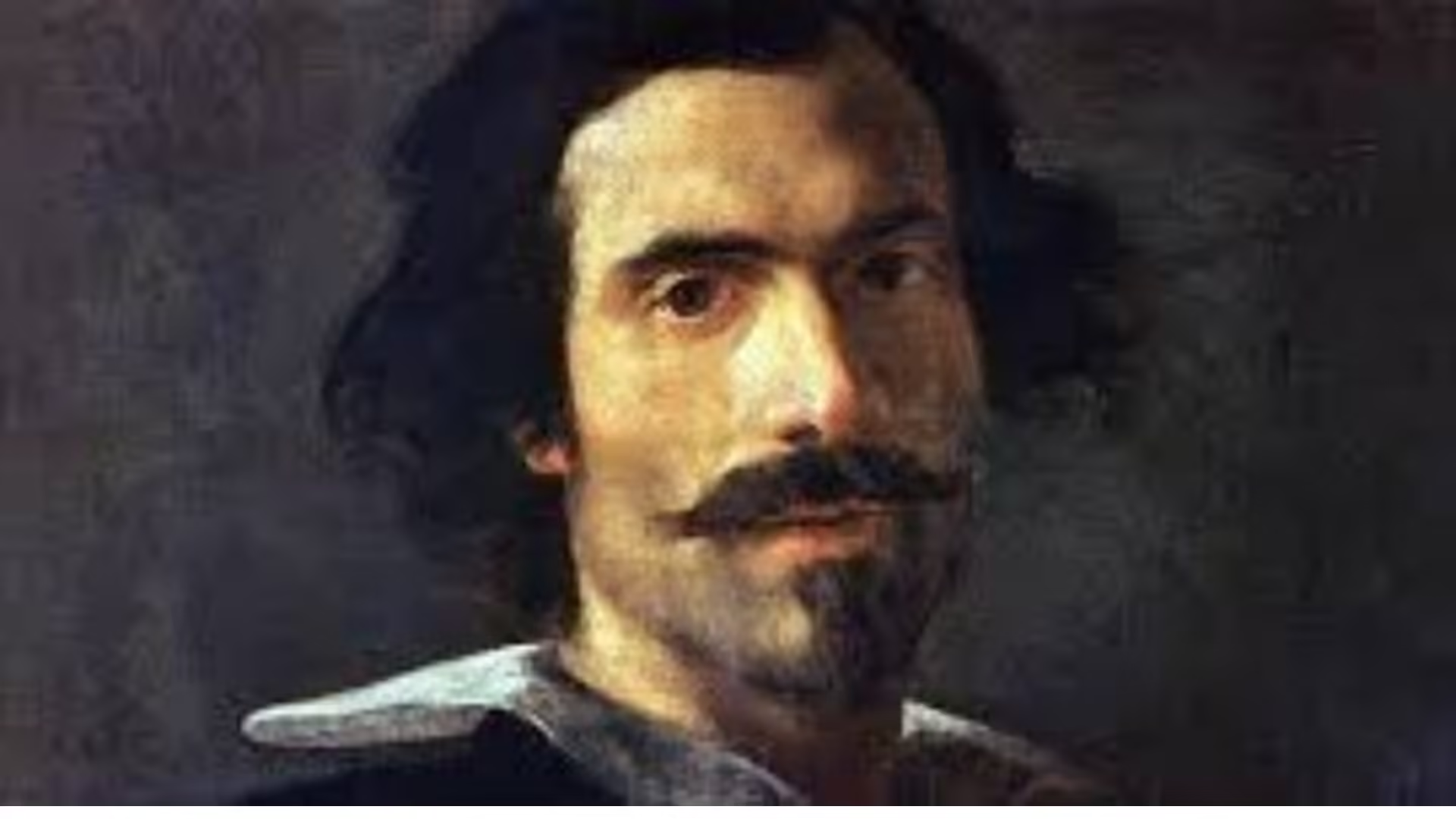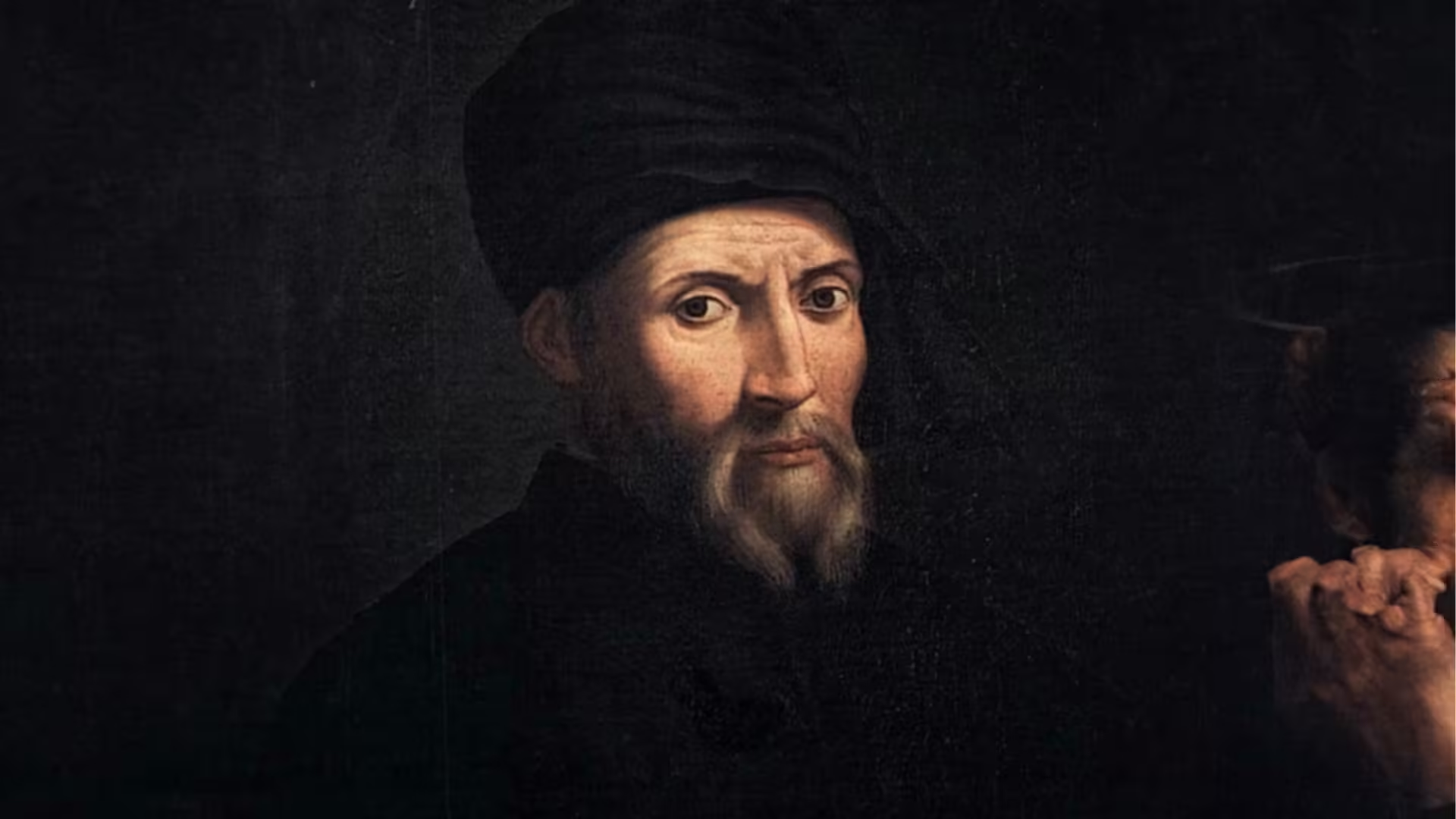Exploring the Masterpieces of Benedetto Antelami – A Romanesque Legend
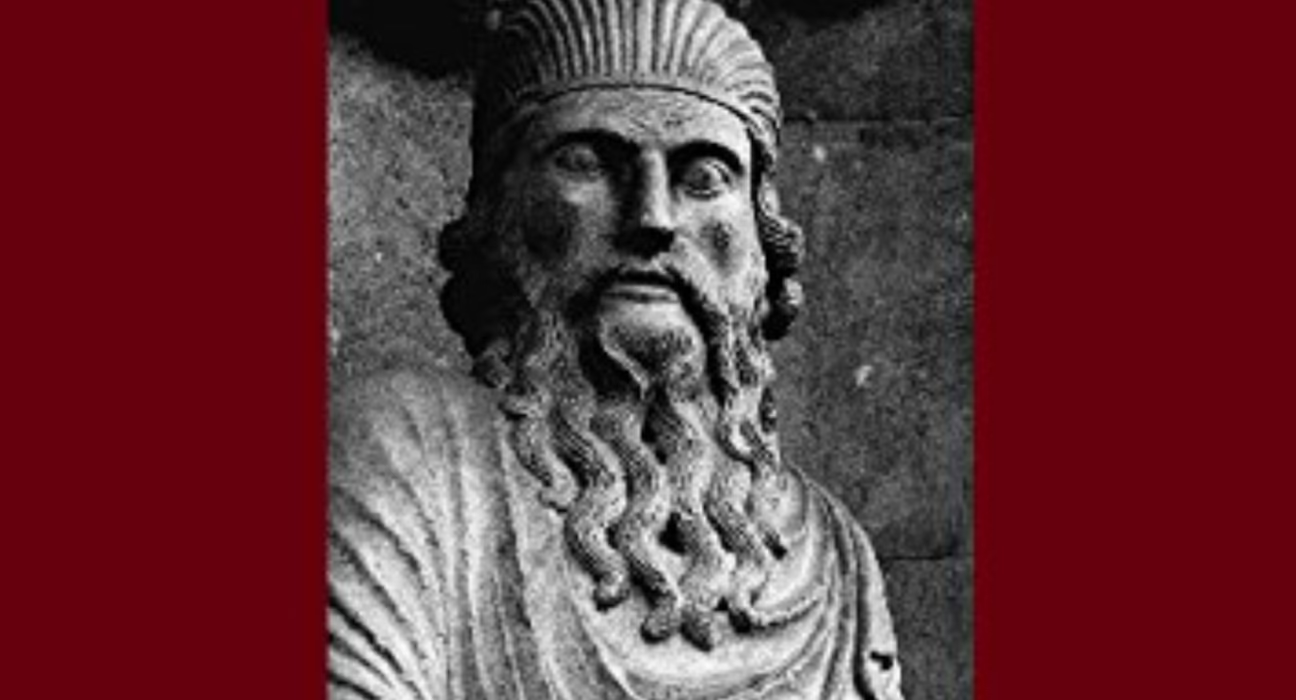
Benedetto Antelami is not just a name; he embodies an artistic spirit that transcends time and space. As one of the most significant figures in Romanesque sculpture, his contributions have left an indelible mark on the rich tapestry of Italian artistry.
The Life and Legacy of Benedetto Antelami
In understanding Benedetto Antelami, one must first delve into his origins and the context in which he flourished. Born around 1150, Antelami emerged as a pivotal figure within the realms of architecture and sculpture, specifically during the flourishing period of the Romanesque style in Italy. His work signifies both a culmination of past influences and a harbinger of future developments in art.
The essence of his legacy can be traced through various avenues:
Early Life and Influences

The early years of Benedetto Antelami were pivotal in shaping his artistic vision. Growing up in a milieu enriched by both Romanesque and Byzantine influences, he was exposed to diverse artistic techniques and philosophies. This exposure would later inform his unique approach to sculpture.
Antelami’s formative years likely involved apprenticeships with established craftsmen. This direct interaction with skilled artisans allowed him to hone his craft, absorbing the nuances of sculptural form and architectural design. His works often exhibit a seamless blend of tradition and innovation, demonstrating an acute awareness of both historical and contemporary styles.
Moreover, the socio-political climate of Northern Italy during this period instilled a sense of purpose in his art. Churches and cathedrals were being constructed as symbols of power and faith, and Antelami contributed significantly to these monumental structures, aligning himself with the collective aspirations of society.
The Artistic Journey Begins

By the late 12th century, Benedetto Antelami had begun making his mark, most notably with the creation of his celebrated work, the “Deposition.” Crafted in 1178, this piece exemplifies the synthesis of Byzantine influence with Antelami’s individualistic flair. It reflects not only technical mastery but also deep emotional resonance, capturing the viewer’s attention.
The “Deposition” serves as a narrative anchor, inviting contemplation on themes of sacrifice and redemption. Through masterful composition and attention to detail, Antelami offers a visual dialogue that bridges the sacred and the secular. His ability to evoke empathy through stone set a new standard for religious sculptures, positioning him as a true pioneer of the Romanesque style.
Key Works and Their Significance
Antelami’s portfolio extends beyond singular masterpieces; it encompasses an array of works that collectively narrate the evolution of Romanesque sculpture in Italy. Examining key pieces reveals both his artistic trajectory and the broader cultural currents of the time.
- Cathedral of Parma: Perhaps the most significant of Antelami’s contributions lies within the walls of the Cathedral of Parma. Here, his artistic imprint is evident in the intricate façade and captivating reliefs that adorn the structure. Each element serves as a testament to his innovative approach to storytelling through sculpture.
- Sculptural Iconography: Antelami skillfully blended mythological and religious elements, inviting viewers to explore the intersections of faith and folklore. His sculptures of the months, animals, and seasons invoke vivid imagery that resonates with the cycles of human existence. This thematic versatility underscores his profound understanding of humanity’s relationship with the divine.
Cultural Impact and Influence
The impact of Benedetto Antelami’s work extends beyond his immediate creations. By pushing the boundaries of sculptural expression, he laid the groundwork for future generations of artists. His stylistic innovations would reverberate throughout the Gothic era and beyond, influencing contemporaries and successors alike.
As artists absorbed Antelami’s teachings, they began to explore deeper dimensions in their own work. The emphasis on emotional depth and complex narratives became hallmarks of subsequent artistic movements. In this way, Antelami served as a bridge between two pivotal periods in art history, fostering a dialogue that continues to inspire.
The Unique Style of Benedetto Antelami
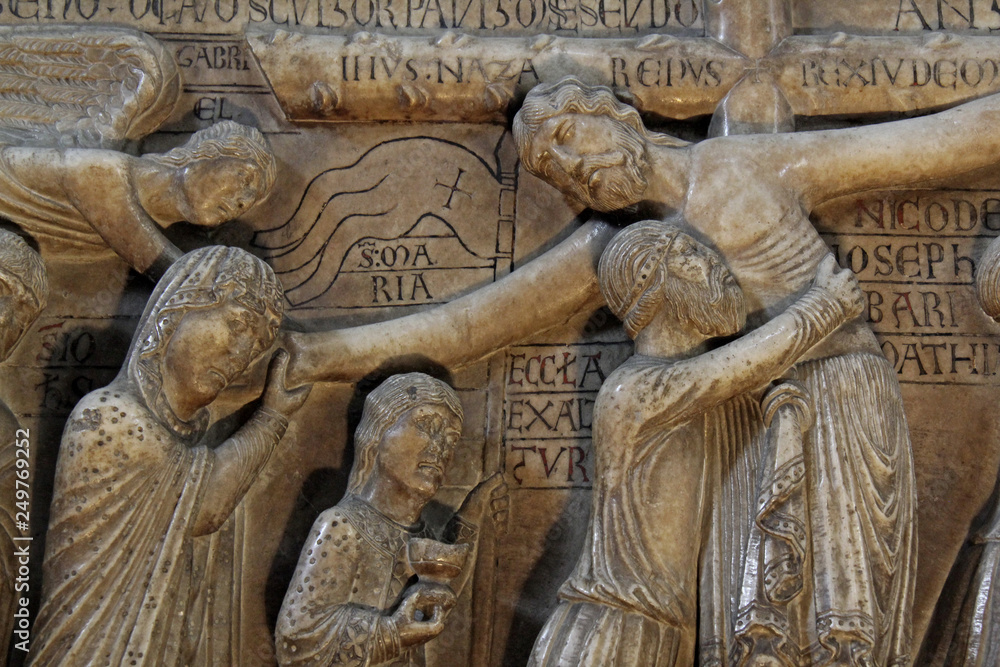
Benedetto Antelami’s artistic style is distinguished by its intricate detailing and emotional realism. His work encapsulates the transitional phase from Romanesque to Gothic, embodying characteristics that define both genres.
The Fusion of Styles
Antelami’s sculptures are characterized by a fascinating interplay between Romanesque solidity and Gothic elegance. This fusion manifests in the use of elaborate drapery and emotive facial expressions, allowing viewers to connect with the figures on a personal level.
His mastery of form is evident in the anatomical precision and fluidity of movement displayed in his sculptures. This attention to detail transforms static marble into dynamic representations of human emotion, inviting engagement rather than mere observation.
Mythological and Religious Themes
A hallmark of Antelami’s work is the integration of mythological motifs with religious iconography. This blending of themes allows for a multi-layered interpretation of his sculptures, enriching the viewing experience. For instance, his depictions of seasonal changes resonate with agricultural cycles and communal life, while simultaneously grounding them in a spiritual context.
By drawing from a wide range of influences, Antelami enriches the narrative quality of his sculptures. The juxtaposition of myth and faith invites viewers to contemplate the interconnectedness of human experience, thereby elevating the role of art beyond decoration to a medium for deeper understanding.
Emotional Engagement
At the core of Antelami’s artistry lies a commitment to evoking emotional responses. His figures are imbued with a sense of life and movement, their expressions revealing a spectrum of emotions from joy to sorrow. This emotional depth captures the viewer’s imagination and facilitates a more profound connection to the subject matter.
Consider the “Deposition,” where the sorrowful expressions of the figures communicate a shared grief that transcends the confines of the artwork. Antelami’s ability to evoke such feelings in stone is a testament to his genius and serves as a powerful reminder of art’s potential to foster empathy.
Notable Masterpieces of Benedetto Antelami
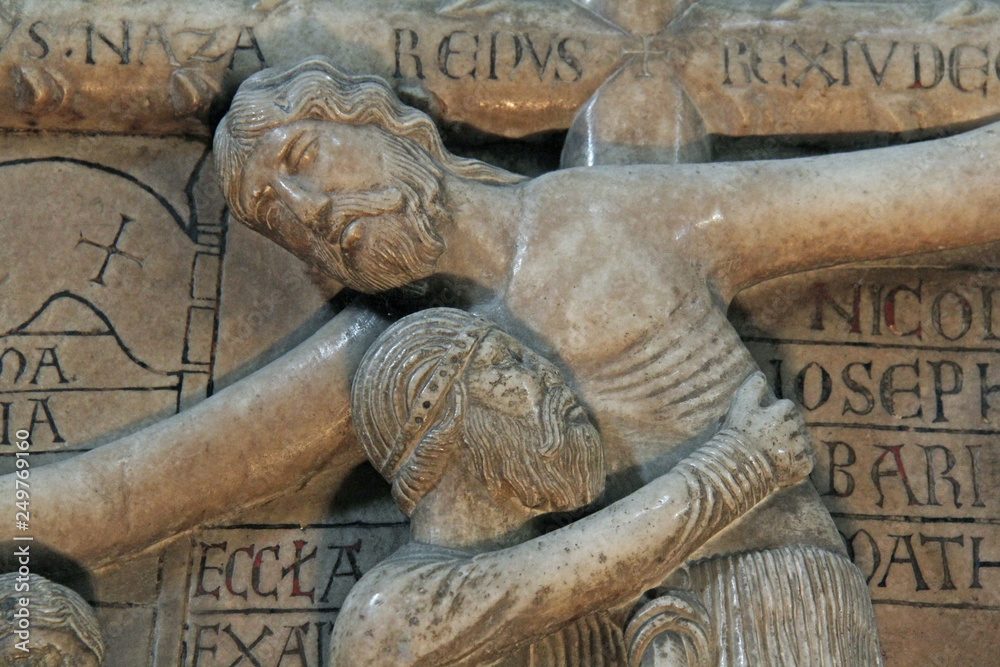
While Benedetto Antelami created numerous works throughout his career, several stand out as exemplary representations of his artistic prowess and vision.
The Deposition
The “Deposition” is undoubtedly one of Antelami’s most renowned works. Commissioned for a church, this sculpture encapsulates the profound moment of Christ’s descent from the cross. The intricate detail and emotional gravity of the piece invite viewers to engage with its themes of loss and redemption.
The composition features a diverse assembly of figures, each radiating distinct emotions. The careful arrangement enhances the narrative flow, allowing the audience to witness the unfolding drama of Christ’s sacrifice. Antelami’s technique captures the raw essence of grief, transforming the coldness of stone into a poignant expression of humanity.
The Cathedral Reliefs
Antelami’s contributions to the Cathedral of Parma are among his crowning achievements. The exterior reliefs, adorned with intricate carvings of biblical scenes and allegorical figures, attest to his exceptional skill and vision.
Each relief tells a story, weaving together theology and artistry with remarkable finesse. The interplay of light and shadow in the carvings further enhances their three-dimensional quality, creating a dynamic visual experience. Visitors to the cathedral are enveloped in a rich tapestry of history and spirituality, all thanks to Antelami’s innovative approach.
Seasonal Representations
Another noteworthy aspect of Antelami’s oeuvre is his depiction of the months through sculptural representations. These figures embody the changing seasons, capturing the cyclical nature of life. Through detailed representations of laborers, animals, and natural scenes, Antelami connects the viewer to the rhythms of nature.
These sculptures serve not only as decorative elements but also as reflections of the agricultural lifestyle prevalent during his time. They ground his work in the everyday experiences of the community, fostering a sense of unity between the sacred and the mundane.
The Enduring Cultural Legacy of Benedetto Antelami
Benedetto Antelami’s legacy continues to resonate through the corridors of art history, shaping the discourse around Romanesque and Gothic artistry. His contributions extend beyond individual works; they represent a pivotal moment in the evolution of artistic expression.
Inspiring Future Generations
The influence of Antelami’s work can be seen in the trajectories of countless artists who followed him. His innovative approaches to sculpture inspired a wave of creativity that sought to explore new emotional depths and narrative complexities. Artists throughout the Gothic period drew upon his techniques, resulting in a notable evolution of style and thematic exploration.
By challenging conventions and embracing new ideas, Antelami opened up pathways for artistic experimentation. His legacy serves as a beacon for future generations, encouraging them to break free from traditional boundaries and explore uncharted territories in their work.
A Connection Between Art and Humanity
Antelami’s commitment to portraying human emotion and experience has solidified his status as a timeless figure in the world of art. His ability to evoke empathy and introspection through stone demonstrates the power of art to transcend cultural and temporal divides.
The themes present in his work—sacrifice, community, and the interplay of myth and faith—remain relevant in contemporary discourse. Antelami’s sculptures continue to resonate with audiences, inviting reflection on the universal aspects of the human condition.
Preservation and Recognition
Today, Benedetto Antelami is celebrated not only for his artistic achievements but also for his role in preserving cultural heritage. Institutions and scholars alike have recognized the importance of his work in understanding the evolution of Renaissance art. Efforts to restore and maintain his sculptures ensure that future generations will continue to engage with his masterpieces.
Museums and galleries across the globe showcase Antelami’s works, further solidifying his place within the pantheon of great artists. Exhibitions highlight the significance of his contributions to the Romanesque and Gothic movements, bridging the gap between ancient craftsmanship and modern appreciation.
Conclusion

In summation, Benedetto Antelami stands as a monumental figure within the history of art, his legacy firmly planted in the evolution of Romanesque sculpture. Through his masterful blending of styles, emotional resonance, and thematic richness, he crafted an artistic language that speaks to the soul.
Antelami’s journey from a young artisan to a revered sculptor serves as a testament to the transformative power of creativity. His ability to forge connections between art, culture, and humanity ensures that his work remains relevant and inspiring to this day. In exploring the life and legacy of Benedetto Antelami, we uncover not only the beauty of his sculptures but also the enduring spirit of artistic expression that continues to shape our understanding of the world around us.




